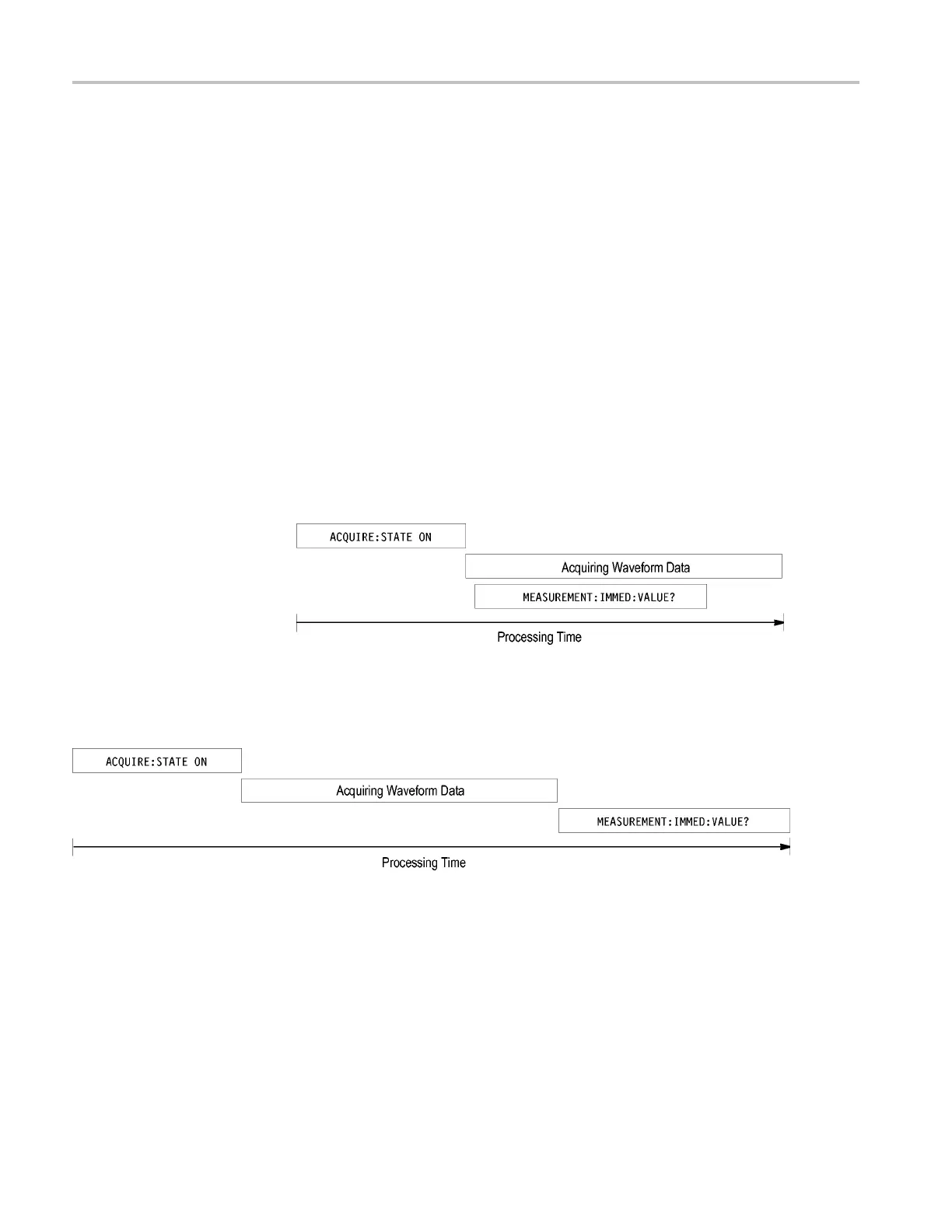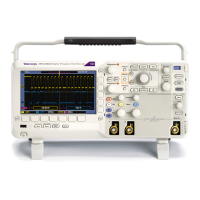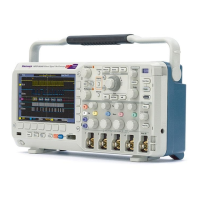Status and Events
For example, a t
ypical application m ight involve acquiring a single-sequence
waveform and then taking a measurement on the acquired w aveform. You c ould
use the following command sequence to do this:
/* Set up conditional acqui sition */
ACQUIRE:STATE OFF
SELECT:CH1 ON
ACQUIRE:MODE SAMPLE
ACQUIRE:STOPAFTER SEQUENCE
/* Acquir e waveform data */
ACQUIRE:STATE ON
/* Set up the measurement parameters */
MEASUREMENT:IMMED:TYPE AMPLITUDE
MEASUREMENT:IMMED:SOURCE CH
1
/* Take amplitude measurement */
MEASUREMENT:IMMED:VALUE
The acquisition of the waveform requires extended processing time. It may not
finish before the oscilloscope takes an amplitude measurement (see the following
figure). This can result in an incorrect amplitude value.
Figure 3-7: Command Processing Without Using Synchronization
To ensure the oscilloscope completes waveform acquisition before taking the
measurement on the acquired data, you can synchronize the program.
Figure 3-8: Processing Sequence With Synchronization
You can use four different methods to synchronize the operation of the
oscilloscope with your application program: *WAI, BUSY, *OPC, and *OPC?.
The *OPC? query method is the most simp
le approach.
Using the *WAI Command
The *WAI command forces completion of previous commands that generate
an OPC message. No commands after the *WAI are processed before the OPC
message(s) are generated.
3-8 MSO2000B, DPO2000B, MSO2000 and DPO2000 Series Oscilloscopes Programmer Manual

